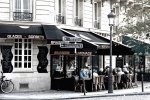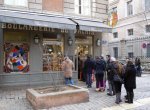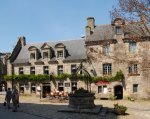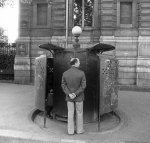paul cEzanne
Poets, writers and painters such as Cezanne have long celebrated the beauties of Provence, its balmy climate, a rich diversity of landscapes from the undulating hillsides of luxuriant vegetation, known locally as garrigue, to the sweeping coastline of the Mediterranean.
But it is the region’s ephemeral light that has most beguiled creative people, drawing renowned artists – Joseph Vernet, Emile Loubon and Vincent van Gogh – to visit the region in an endeavour to capture the fleeting qualities of light and colour.
Walkers at the foot of Saint-Victoire mountain, whose highest point reaches 1011 metres at the Pic des Mouches. The mountain is now famous throughout the world as one of the favourite subjects of the artist Paul Cézanne, who painted it many times. © Atout France/Michel Angot
Yet one artist above all others is inextricably linked with Provence: Paul Cézanne. This was his native region, and he remained deeply attached to it throughout his life, himself motivating early 20th-century painters such as André Derain, Georges Braque and Raoul Dufy to visit Provence and to experiment with the new ideas that were to become known as ‘Fauvism’ and ‘Cubism’. For art lovers, it is fascinating to realise that this atmospheric region around Marseille and Aix-en-Provence was the setting for the pioneering brush strokes of ‘Modern’ painting. These and other artists have contributed to the far-reaching renown of Provence by painting scenes like the town of Aix (Cezanne’s birthplace), Sainte-Victoire mountain, Arles, la Ciotat, Cassis, and l’Estaque, then a small industrial harbour north of Marseille, and today a tranquil settlement dependent on the sea for its livelihood. It was in l’Estaque, which he visited on no fewer than five occasions between 1870 (the time of the Franco-Prussian War) and 1886, that Cezanne began an artistic love affair with his home region, a passionate involvement with town, village and countryside. From this ‘marriage’ arose a unique body of artistic creation, one that has had a profound influence on artists ever since. It was as if the artist’s communion with nature somehow found a passage to another dimension, a breakthrough in ideas that was as startling as it was innovative.
CEZANNE: VISIT THE ARTIST'S BIRTHPLACE
It was into the early 19th-century world of a commercial Provençal family that Paul Cezanne was born. But of his birthplace, along the Rue de l’Opéra in Aix, only the façade now remains. His father was a successful hat maker, his ‘Chaponnerie’, or hat factory, still stands, adjacent to Les Deux Garcons, at 55 Cours Mirabeau. Later, Cézanne’s father became a banker, urging his son to study law. But it was not the legal profession that inspired Cézanne. He wanted to paint.
In 1859, Cezanne’s father bought the Jas de Bouffan, a bastide, or country house, on the outskirts of Aix, formerly the house of the Governor of Provence. It is even now a fine house in the middle of rows of plane and chestnut trees – a scene Cézanne represented in Chestnut Tree alley in the Jas de Bouffan. For forty years, off and on, this was Cézanne’s home, a beautiful building of simple design on the top floor of which Cézanne had an atelier, his studio, facing north towards the centre of the city. It is remarkably small, you expect something much more grand. But it is nonetheless inspiring to stand in it, to look through the windows at the rows of trees on which Cézanne himself gazed, realising that this is where Cézanne worked on many of his great works, although his particular passion, and ultimately the case of his death, was to paint out of doors.
The future of Jas de Bouffan is uncertain; political and financial divides haggle to find an acceptable plan for the house, while conservationists pray that common sense will prevail and the house used in some way to pay homage to Cezanne. It remains in a poor state of repair and the only room you could enter, when we visited in 2011, was the dilapidated salon (there are plans to restore more of the Jas). Because of this, you are not allowed to wander round on your own but must go on a guided visit, most of which takes place in the surrounding gardens.
Recent Articles
-
French Food and Drink - No BS Guide for lovers of Food, Wine, Liqueurs
Aug 28, 19 03:18 AM
Our guide to French food and drink for those who love traditional French food along with our no BS guide to understanding French wine and liqueurs
-
Things To Do In Carcassonne The Ultimate Tourist Guide
Aug 24, 19 06:26 PM
The ultimate tourist guide to things to do in Carcassonne when you visit this wonderful town in Aude France. Discover the places to go and see in Carcassone.
-
Lyon Old Town Guide to Vieux Lyon
Aug 18, 19 07:48 AM
Your complete guide to Lyon old town otherwise known as the Vieux Lyon. Don't miss this amazing part of the city if you're visiting Lyon in France.
-
18 French Villages You Must Visit Most Beautiful Villages in France
Aug 17, 19 06:31 AM
Our guide to the 18 most beautiful French villages you simply must visit. Loads of info, photos and facts in our ultimate villages in France tourist guide
-
What a Pissoir - The True Story of France's Unique Urinals
Aug 13, 19 03:47 PM
Is there anything more French than a pissoir? Sadly on the decline nevertheless the pissor is an endring image of the country. This is their story





